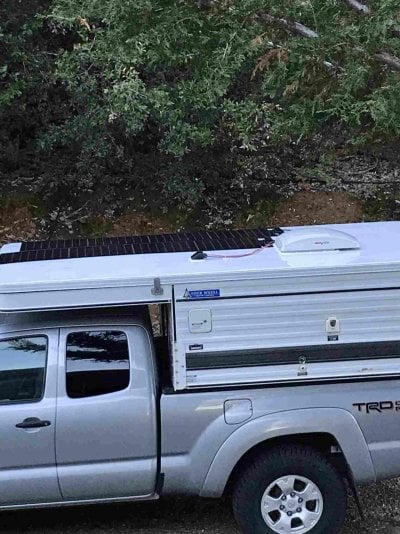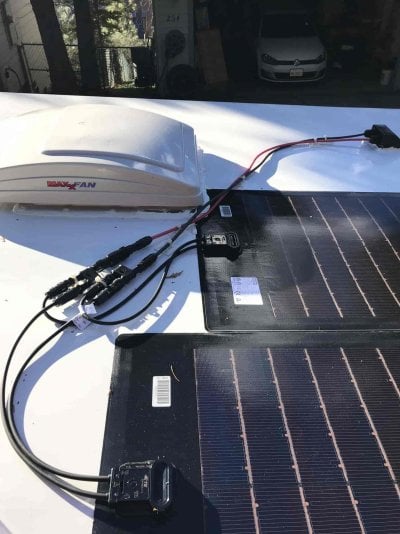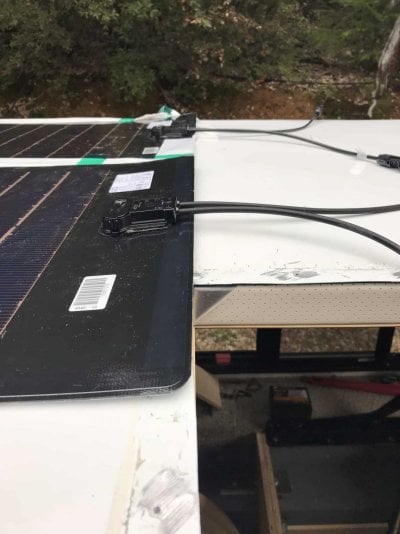The Global flexible solar panel brochure lists the adhesive but I do not see anything the back surface material the cells are mounted to.
The adhesive is ADCO HelioBondTM PVA 600BT butyl mastic
I looked at both the Global site and the ADCO Corp site and did not find any thermal conductivity data for the adhesive nor did I find any discussion of thermal conductivity to the RV roof.
Sure seems like a marketing oversight. just hope it isn't an engineering oversight too.
Typical butyl rubbers (or mastics) are lousy thermal conductors (good thermal insulators).
Edit: Digging deeper the panels at the following (China) link sure look the same as the Global panels but Global claims their panels are made in the US. What do they mean made in the US?
http://www.sinoltech.com/uploadfile/download/20179261110183184.pdf
Edit 2: Global is owned by Hanergy. Hanergy is a Chinese company
https://en.wikipedia.org/wiki/Hanergy
Edit 3: and here it is
SINOLTECH COOPERTION WITH HANERGY: SINOLTECH becomes authorized cooperator with Hanergy in year 2015. Representing brand “Global Solar”, “Miasole” and “Solibro” CIGS Modules in overseas market.
https://www.enf.com.cn/Product/pdf/Crystalline/5a66efd642591.pdf
Caveat emptor!
Good questions, I will hopefully have a response in a couple of days.



